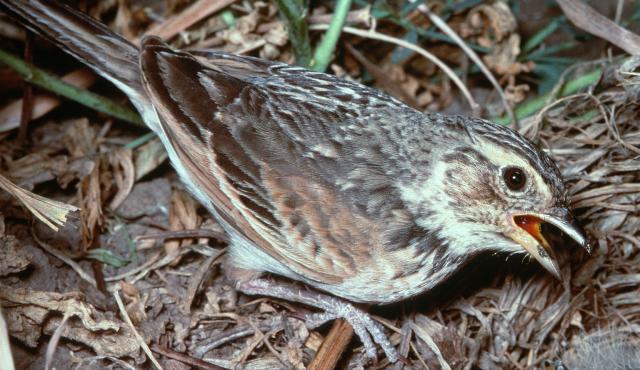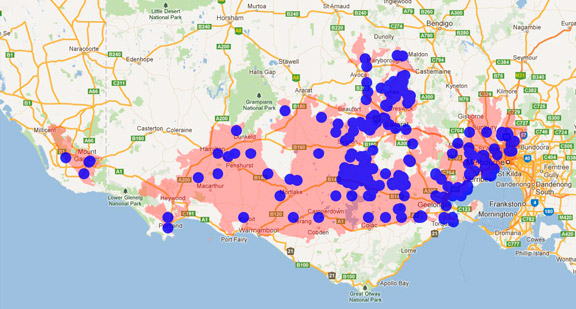A range of teacher professional learning programs will be developed to accompany the Biodiversity of the Western Volcanic Plains online outreach...

Horsfield's Bushlark
Mirafra javanica
Breeds September-January following significant rainfall. Builds cup-shaped nest in hollow or natural depressions in the ground, usually in grasslands.
| Details | Description |
| Type | Bird |
| Group | Bushlark |
| Other Common Names | Singing Bushlark, Australian Skylark |
| Identifying Characteristics | |
| Distinctive Markings | Feathers have dark, central streaks. Many colour variations exist that tend to match the soil colour. |
| Diet | Omnivore. Feed on grasses, seeds and insects. |
| Habitat | Open woodland, tussock grassland, saltbush, cereal crops and sparse sugar cane fields. |
| Native Status | Native to Australia |
| Sounds | Song interwoven with shrill trilling, rich, melodious sounds, mimicry. |
| Taxonomy | |
| Phylum | Chordata |
| Class | Aves |
| Order | Passeriformes |
| Family | Alaudidae |
| Genus | Mirafra |
| Species | javanica |

Distribution maps indicate current and historic locations where species have been sighted.
Source: Atlas of Living Australia
| Conservation Status | |
| DEPI Advisory List | Not listed |
| FFG Act | Not listed |
| EPBC Act | Not listed |
The conservation status of species is listed within Victoria and Australia.
The Department of Environment and Primary Industry (DEPI) Advisory List consists of non-statutory advisory lists of rare or threatened flora and fauna within Victoria.
The Flora and Fauna Guarantee Act 1988 (FFG Act) lists threatened species in Victoria. Under the Act, an Action Statement is produced for each listed species.
The Environment Protection and Biodiversity Conservation Act 1999 (EPBC Act) is the Australian Government’s key piece of environmental legislation, listing nationally threatened native species and ecological communities.



